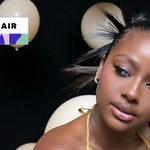Wigs are having a major moment right now. They have firmly placed themselves as one of the most popular styling options for many women of color. Wigs of various kinds have been popular for years, but the units we have now are much different than the ones our great grandmothers may have worn! Over the years, new styles, textures, colors, and styling options have emerged. It's clear that wigs have gone through a major evolution over the years. Read on to learn more about wig origins and how they have evolved over the years.
Origins in Ancient Egypt
Ancient Egypt has some of the earliest recorded usage of hair pieces and wigs, with evidence of extensions dating as far back as 3400 B.C. Wigmakers used to create wigs out of a variety of materials such as vegetable fibers, wool, animal hair and human hair. It took weeks to make a wig, which made them extremely expensive and out of reach for most Egyptians. Wigs were only adorned by elite Egyptians, often for special occasions. Aside from just looking nice, Egyptians also sometimes wore wigs for more practical purposes. Wigs helped shield those with shaved heads from the blistering Egyptian sun and offered some protection from head lice.

Image: J. Fletcher/Ancient Adornments Project

Image: Wig Cover 18th Dynasty, reign of Thutmose III, 1479-1425 BC. Photographed at the Metropolitan Museum of Art in New York City
Early 20th Century - Short, Straight and Sweet
The early wigs of Black women in America could be described as simple and sophisticated. In this era, Black women veered towards wigs that were short and straight. Popular styles ranged from pixie cut wigs to shoulder-length bobs. As television boomed and Black musicians, particularly in the 50s and 60s, became televised across the world, we began to see the beginning of performers using wigs in their shows. Female singers became popular for their retro wig looks. Legends such as Aretha Franklin, Diana Ross, and Dionne Warwick often had a variety of wigs that complimented classic looks during a lot of their performances.

Image: WallofCelebrities.com

Image: Billboard.com
1970s – The Emergence of Natural Hair Wigs
In the 1970s, big afro and curly wigs came into fashion, and men and women everywhere wore them proudly. The 70s came off the heel of the Civil Rights and Black Power era which saw Black people gain more comfort with embracing naturally textured styles. The emergence of the natural hair revolution is a politically important moment in the evolution of wigs. It signified a change in the collective consciousness of what was beautiful to Black people. Individuals had the option to change up their hairstyles and choose between straight and natural styles, unlike yesteryears where straight styles were the only options. Afro wigs also helped individuals test out natural styles without having to fully commit to them, in a time where natural hair was still a very new concept. The embracing of dramatic afro wigs, particularly by Black artists of the era, solidified it as a defining element of glamorous 70s styles, and paved the way for the plethora of modern, natural hair textured wigs of today.

Image: WorldWideEntertainmentTv

Image: Pinterest
1980s and 1990s – The Beginnings of Big Hair and Bright Colors
During this era, we begin to see more fun and extravagant wigs taking the stage – especially with our most beloved performers. Big hair had a moment and very dramatic and voluminous, long wigs became popular. During this time period, wigs with non-natural colors start popping up. Before, wigs came mainly in black or brown colors, but now is the era where we start seeing wigs ranging in every color from blonde to blue. They became increasingly popular and seen on the street, magazines and music videos. Musicians like Lil Kim and movies, such as B.A.P.S., showcased the newfound creativity becoming more popular with wig styles available and being worn by the everyday woman.

Image: Pinterest

Image: Biography.com
2000s and beyond – Rise of the High Tech Wigs
Today’s wigs utilize high tech styling techniques that could probably pass for magic. Wigs of centuries past never had natural-looking hairlines. While still stylish, they did not mimic a real hairline or the flow of natural tresses. Wigs looked like wigs! Modern wigs' hairlines have the benefit of closures, frontals, and delicate installation techniques that include steps such as bleaching knots and coloring wig caps. Another bonus of today’s wigs is the addition of more affordable human hair options. Most women in previous generations wore synthetic wigs, because the scarcity of human hair wigs excluded most women from rocking them. In modern times, human hair wigs are more affordable and accessible for women if they so choose. Today’s wigs also come in a multitude of textures, ranging from bone straight to kinky curly. Women today have access to the widest options for wig making and styling; this has led to a whole host of unforgettable wig looks, worn by everyday women and celebrities alike.

Image: @Krouserdavis wearing Mayvenn

Image: @Hairaconda wearing Mayvenn








